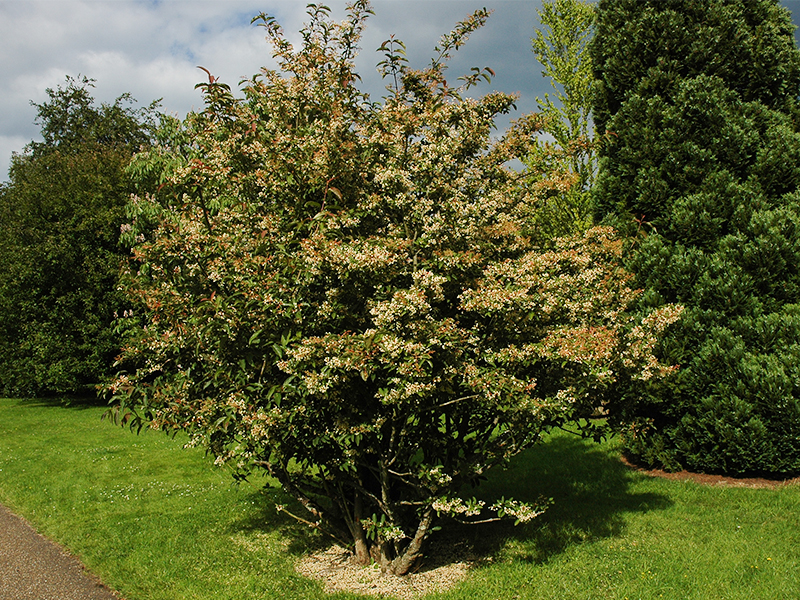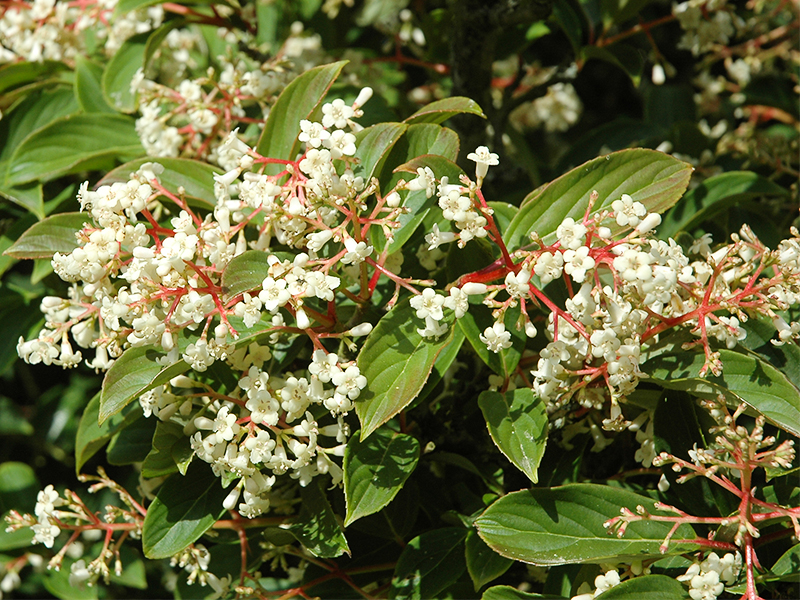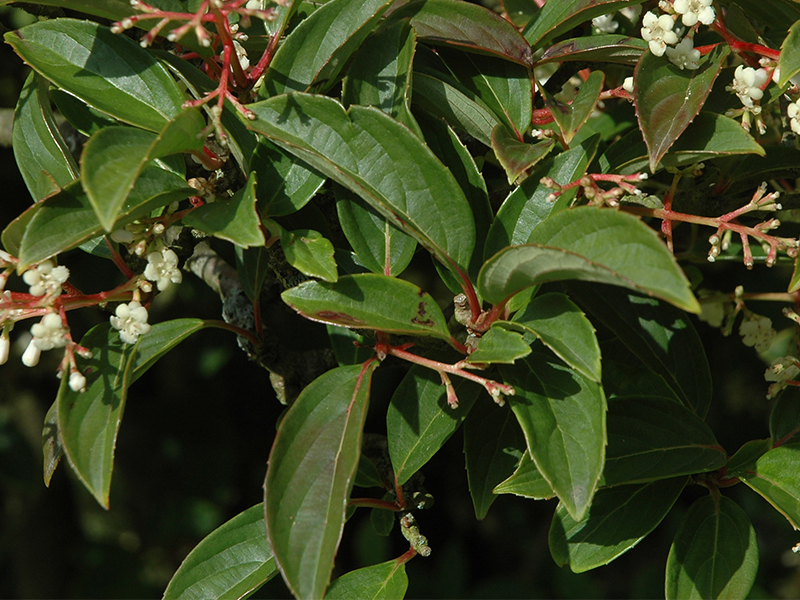| Shape | Large and branching. |
| Landscape | Ornamental use. |
| Propagation | Semi-ripe cuttings in summer, semi-hardwood cuttings and grafting. |
| Cultivation | Full sun and partial-shade. Moist and well-drained soil with a pH of 5.6 - 7.5 (acidic, mildly acidic and neutral). |
| Pests | Aphids, viburnum whitefly, scale insects, tortrix moths, viburnum beetle, leaf spot and honey fungus. |
| Notable Specimens | RHS Garden Rosemoor, North Devon, England. |
| Habitat | Horticultural origin. |
| Leaf Description | Oval shaped and narrow blades. |
| Flower Description | Masses of fragrant flowers that bloom in early summer. |
| Fruit Description | Clusters of fruit appear in autumn. |
| Colour Description | The flowers are creamy-white. The leaves are bronze in spring, become a dark green as it matures before turning a vivid shade of plum purple or red in autumn/winter. The fruit is red and darken to black before falling off. |


